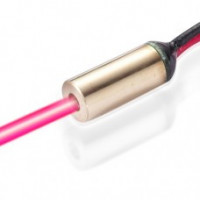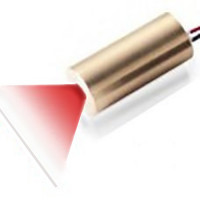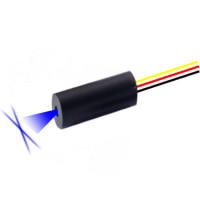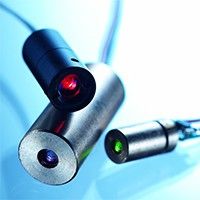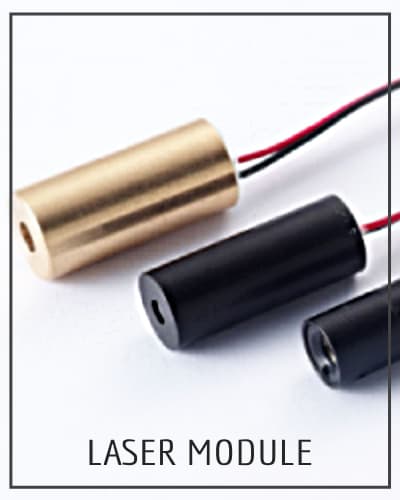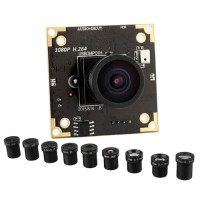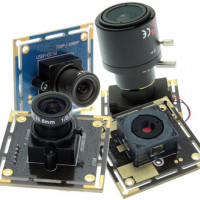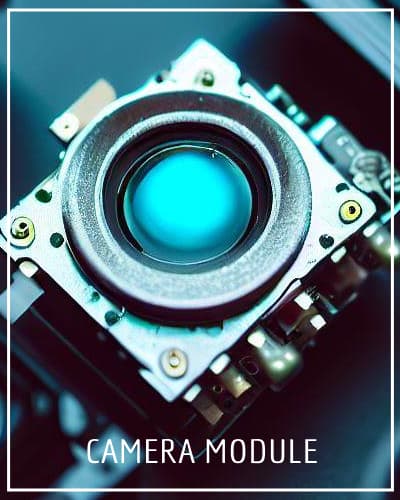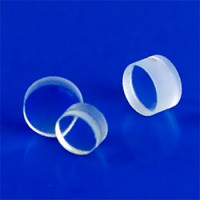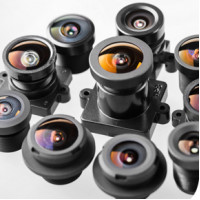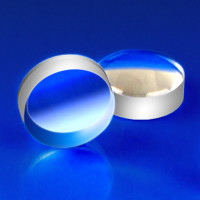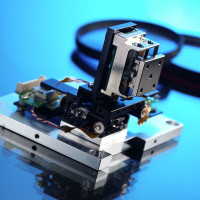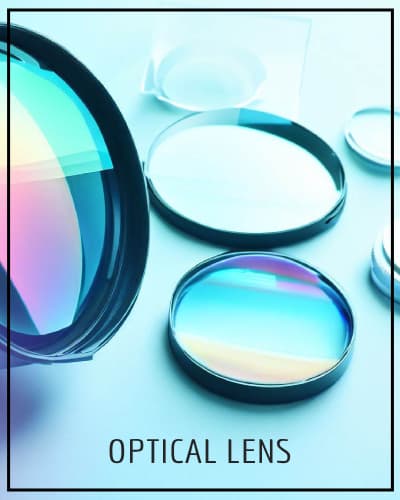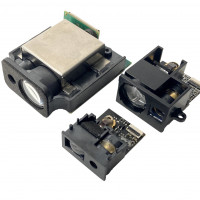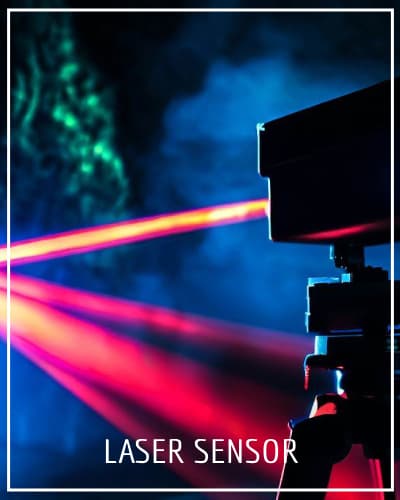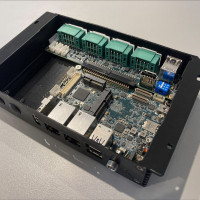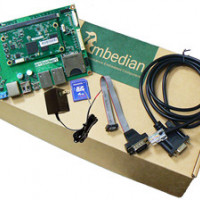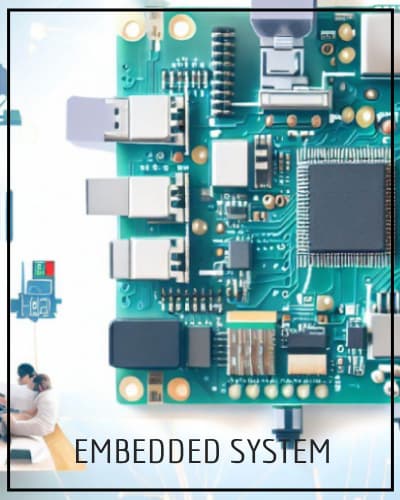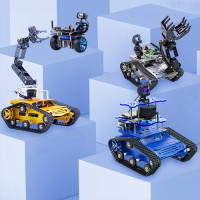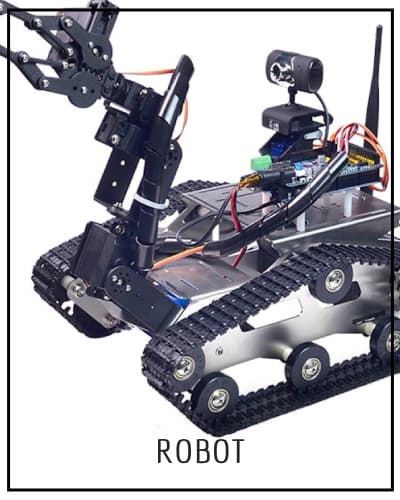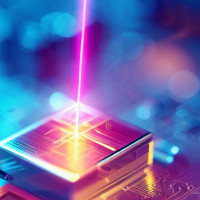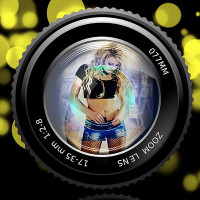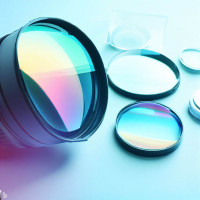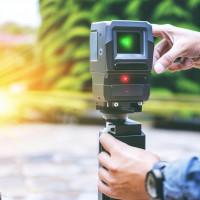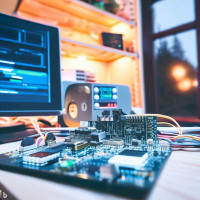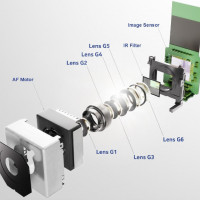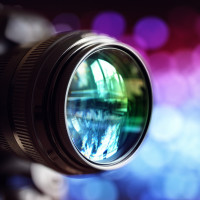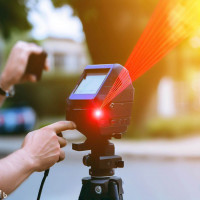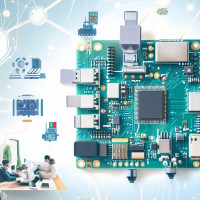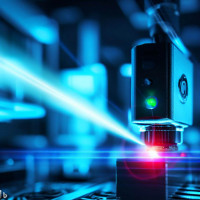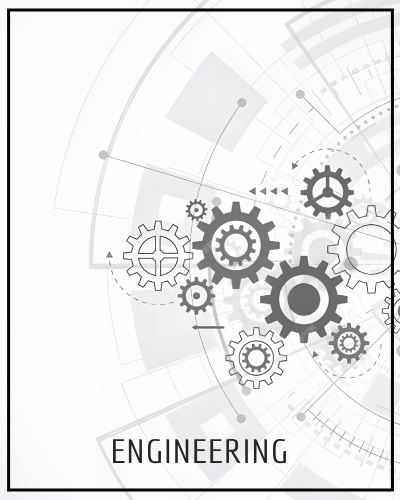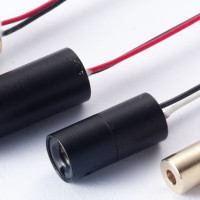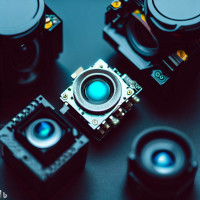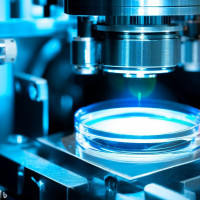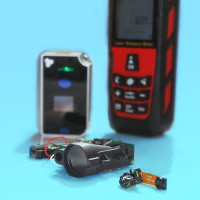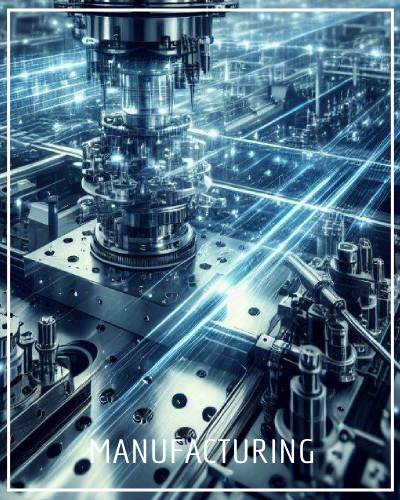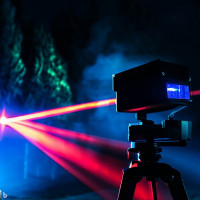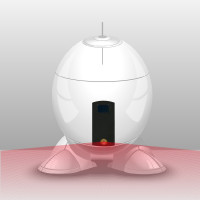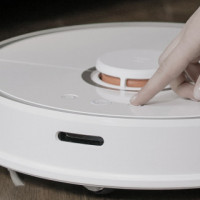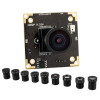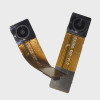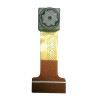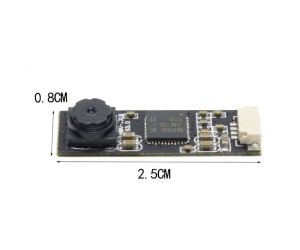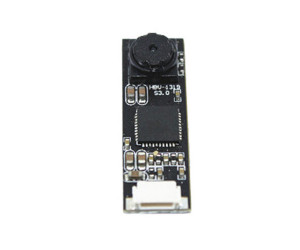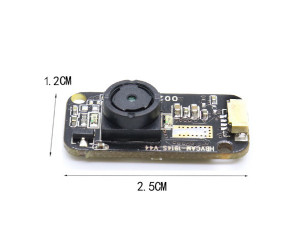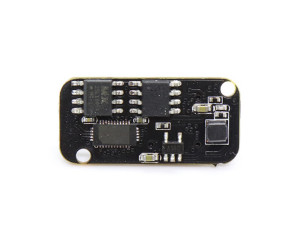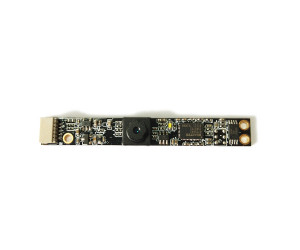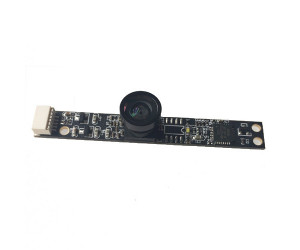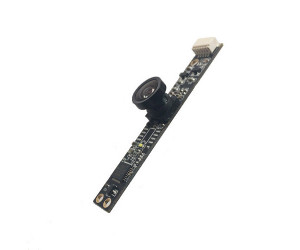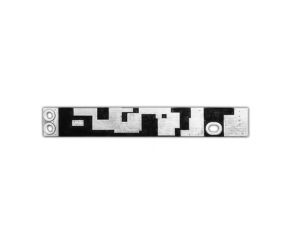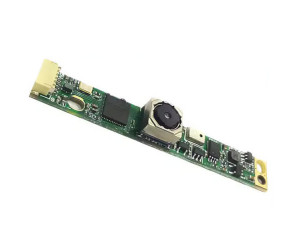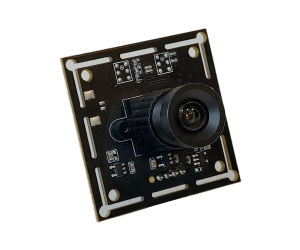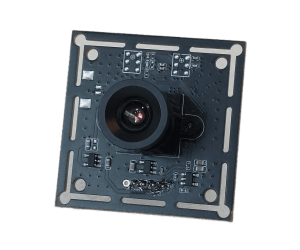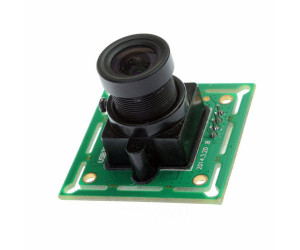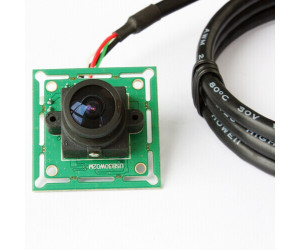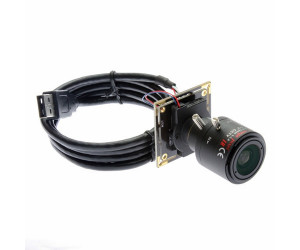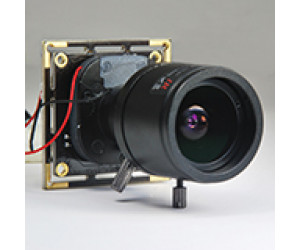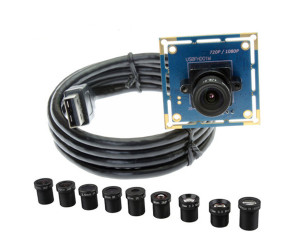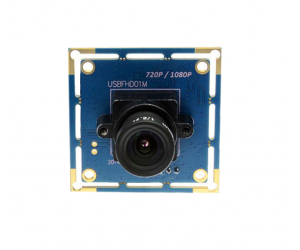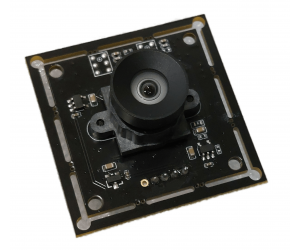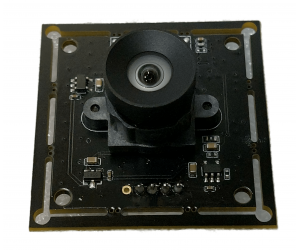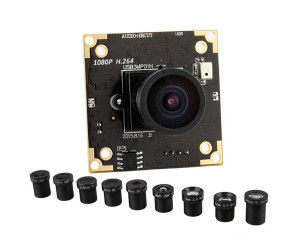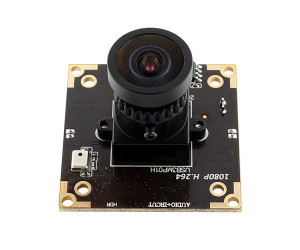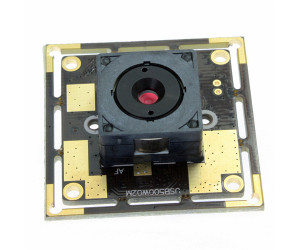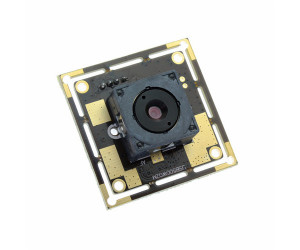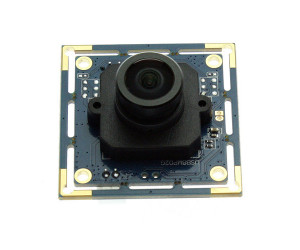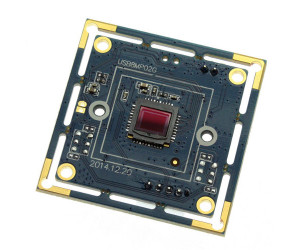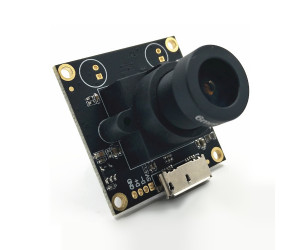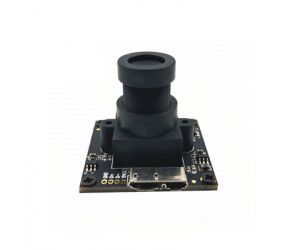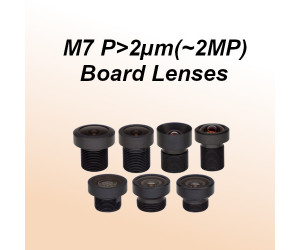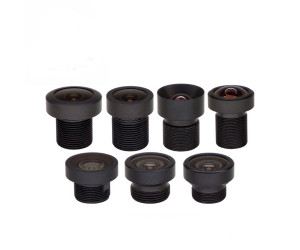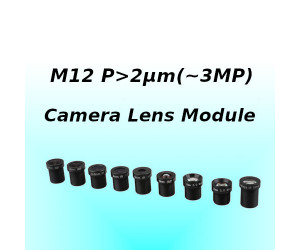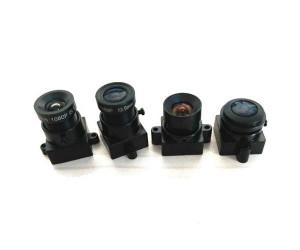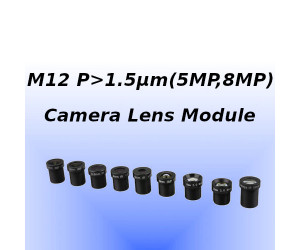Camera Module, Board Camera Naming Rule: USB Camera Module, MIPI Camera Module, FPC Camera Module
| Product Code | Pixels | Frame Rate | Lens Size | Type | FL / FOV(D) |
| CM: | 03M: VGA | 15: 15fps | M5 | Q: Square | -FL2.1 |
| Camera Module | 1.3M (Mega) | 30: 30fps | M7 | L: Slender | -FL6 |
| MIPI Camera | 5M (Mega) | 60: 60fps | M12 | S: Small | -V60: 60° |
| 13M (Mega) | 120: 120fps | S: Special | M: MIPI | AF: Auto Focus |
As our optoelectronics integration and manufacture experience of camera lens and CMOS camera module, we have camera modules with different FOV camera lens module options for image processing, laser detection and video camera applications.
USB Camera Module, Board Camera: The USB board cameras adopt the standards of the USB interface, so they are easily expandable and adapted, also driver-free by the USB device standards. The USB camera module integrates the camera unit and video capture unit directly suitable for the image software or system applications.
CMOS Camera Module, Camera Board: CCM is more complicated as the interface MIPI or DVP and DSP is separated with the module, Using an adapter board and daughter-board to test and develop. The features of CCM include mini size, low power consumption, and low cost.
MIPI Camera Module: The CMOS camera module with the MIPI interface is high-performance, cost-effective for embedded applications.
Custom Camera Module, Board Level Camera and Sensor Module: Except the camera modules listed online, we also can custom made the camera module and sensor module as your requirements. You can visit custom camera module to review the introduction and customized requirements flow. Welcome your inquiry, please don't hesitate to contact us.
USB Camera Module, Board Camera: The USB board cameras adopt the standards of the USB interface, so they are easily expandable and adapted, also driver-free by the USB device standards. The USB camera module integrates the camera unit and video capture unit directly suitable for the image software or system applications.
CMOS Camera Module, Camera Board: CCM is more complicated as the interface MIPI or DVP and DSP is separated with the module, Using an adapter board and daughter-board to test and develop. The features of CCM include mini size, low power consumption, and low cost.
MIPI Camera Module: The CMOS camera module with the MIPI interface is high-performance, cost-effective for embedded applications.
Custom Camera Module, Board Level Camera and Sensor Module: Except the camera modules listed online, we also can custom made the camera module and sensor module as your requirements. You can visit custom camera module to review the introduction and customized requirements flow. Welcome your inquiry, please don't hesitate to contact us.
Camera module / Board camera customized process insight
With hundreds of camera module application, the standard camera modules can't meet each specific requirement, so customization process comes with necessity and popularity, the hardware and firmware modification, including module dimension, lens view angle, auto/fixed focus type and lens filter, to empower the innovation.
Non-recurring engineering completely covers the research, development, design for producing a new product. For saving the developing time and cost, IADIY provides the custom camera module service based on our standard camera module solution.
Customized requirements flow
- You can provide drawings or samples, as well as request documentation and developed by our engineering staff.
- Communication
- We will communicate with you in detail to determine somewhat product you need and try to set the most suitable product for you according to your needs.
- Sample Development
- Determine the details of the development sample and the delivery time. Communicate at any time to ensure smooth progress.
- Sample Testing
- Test and age on your application, feedback test results, no need to modify, mass production.
Questions you should ask before customized a camera module or board camera
What are the requirements?
The USB camera module must have the following requirements. They are the most important components which add photo clarity and good working principle. The components are well specified by connecting via CMOS and CCD integrated circuit. It must work according to user requirements and acts as a user-friendly camera option. It will connect with lots of things that add a perfect solution for camera requirements for USB connection.
- Lens
- Sensor
- DSP
- PCB
What resolution do you want from a Camera Module / Board Camera?
Resolution is a parameter used to measure the amount of data in a bitmap image, usually expressed as dpi (dot per inch). Simply put, the resolution of the camera refers to the ability of the camera to analyze the image, that is, the number of pixels of the image sensor of the camera. The highest resolution is the size of the camera's ability to resolve images at the highest, the highest number of pixels in the camera. The current 30W pixel CMOS resolution is 640×480, and the resolution of 50M-pixel CMOS is 800×600. The two numbers of resolution represent the units of the number of points in the length and width of a picture. The aspect ratio of a digital picture is usually 4:3.
In practical applications, if the camera is used for web chat or video conferencing, the higher the resolution, the greater the network bandwidth required. Therefore, consumers should pay attention to this aspect, should choose a pixel suitable for their own products according to their needs.
The Field of view angle (FOV)?
The FOV angle refers to the range that the lens can cover. (The object will not be covered by the lens when it exceeds this angle.) A camera lens can cover a wide range of scenes, usually expressed by angle. This angle is called the lens FOV. The area covered by the subject through the lens on the focal plane to form a visible image is the field of view of the lens. The FOV should be decided by the application environment, The larger the lens Angle, the wider the field of view, and vice versa.
Board Camera Dimension for your application
The major parameters that have been calculated with the camera module are the dimension, which varies the most for different requirements depending on size and optical format. It has a field of view and focal length for accessing with object dimension calculation. It involves back focal length and includes a perfect lens for format. The optical size of the lens must fit your application and depend on a conventional one. Diameter varies as per larger sensors and implements with lens covers. It depends on the form of vignetting or dark on the corner of the images.
With hundreds of thousands of camera module applications, module dimensions represent the factor that varies the most. Our engineers have the power to develop the exact dimensions which will work best for your specific project.
The EAU of the products
The cost of the price product depends on the specification. The USB board camera with small EAU is not suggesting as a customized one. with Constantly demand and personalization requirements like Lens, size, sensor, a customized camera module is your best option.
Choosing the right camera module or camera board
In general, most of the customers will be concentrated on the right camera module that one will never know what kind of lens required to use here. There an enormous number of theory has been used here to make aware of the people to pick the perfect lens and to choose the perfect camera module. The lens you are going to choose will be completely dependent on the process that you are going to make use of. Due to the different solutions of the sensor and DSP, and lens different lenses, and the imaging effects of the camera module are also very different. Some cameras can be used in different applications, but some can only be used in some specific applications to get the best imaging results. Some star-level cameras can capture images in low-light environments, but at a relatively high price.
Effective impacts:
In case you have been installed the camera module or camera in your office or small bedroom, then only 2.8mm focal length will be enough at that point in time. In case you want to install the camera module or camera in your backyard means then sure it must require 4mm to 6mm focal length. The focal length is increased since space is bigger. You will require the 8mm or 12mm focal length then you can use this in your factory or street since space will be very much high.
When you want to choose the camera module for the NIR light then the spectral response of the camera module will be majorly defined by the lens material or sensor material. The sensors will be completely silicon-based and it will show the effective response to the NIR light in a most extraordinary manner. Compared to visible light or 850nm, the sensitivity will be very much smaller for the 940nm. Even though you get this still you can able to get the image very effectively. The most important concept involved in this process will create enough light for the camera for the purpose of detection. You will never know perfectly when the camera can able to be triggered and can grab the perfect timing will be very much different. So at that time, the signal will be sent to a particular extent and one can able to choose the right camera module.
Conclusion
From the above discussion, the USB camera module has overall functions and assembles with an automatic zoom module. The fixed focus of the USB camera module has a lens, mirror base, photosensitive integrated circuit, and so on. Users must find the difference between USB and MIPI camera modules.
A customized camera module is more suitable for the development of new applications. Because the customized camera module can be build base on the specified requirements. From the development trend of the camera we can learn:Firstly, higher pixel (13 million, 16 million), high-quality image sensor (CMOS), high transmission speed (USB2.0, USB3.0, and other fast interfaces) camera will be the future trend; Secondly customization and specialization (only used as a professional video input device), multi-functional (with other functions, such as the accompanying flash drive, the trend toward digital cameras, it is also conceivable that the camera can have the function of a scanner in the future), etc. Thirdly, user experience is crucial, more user-friendly, easier to use, and more practical application functions are the real needs of customers.

AI Camera: Camera Module with AI Soc soluton integrated
An AI camera is a camera that uses artificial intelligence to help image processing, or recognize objects through intelligence, or optimize output based on the scene to take better photos, or better image recognition. Our AI1001 Soc is the first AI single chip solution with CMOS Image Sensor (CIS) and the processor embedded can be programmed with AI training code for image processing and recognition. The integrated AICM1001 camera module and SOC provides all the necessary interfaces over a small flex cable design. More details please review: AI SoC Camera Module AICM1001 Introduction.
As the Sigmastar's partnership, IADIY also can support high end AI recognition module like using Sigmstar Soc (integrated dual-core Cortex-A7 1.2GHz processor) control core, integrated 128MB-DDR3 memory, 512MB NAND Flash, and 1080P camera. With embedded Linux operating system and rich software and hardware resources and development tools integrated, this AI camera is committed to bringing users a simple and efficient AI development experience out of the box.
The Advantages: Compact, Simple Interface, Cost Effect
Compact Design
|
Single Chip embedded AI SoC with CMOS Image Sensor
 |
Compact AI SoC Camera Module AICM1001
 |
Simple & Flexible peripheral interface
The
AICM1001 camera module uses a common 32 pin pinout. It supports status LED, flicker compensation, microphone, speaker and even a G sensor
interface as HMI features. Compatible with mature production capabilities, the Camera Module has a flexible peripheral interface
design which can be easily adapted for various applications.
Convenient & Cost Effect
A convenient and user friendly development board supported with a
complete Software Development Kit (SDK). The AICM1001 camera module integrates CIS, MCU and neural network into a single-chip solution,
using a very mature and high-yield assembly process to provide a very cost-effective solution.
Applications
AICM1001 provides an optimized low power single chip edge computing solution with an integrated image sensor for interactive smart applications.
Artificial Intelligence SoC camera module is not only applicable for a wide range of consumer products but can also be easily integrated into
different industrial systems.Smart Home
Lighting Control, Window Blinds, Security & Access Control, HVAC Control, Entertainment, Home Healthcare touchless control, Touch-free interface to smart home devices, Robot vacuum cleaners, lawn mowers etc. AI SOC
camera is different from traditional motion detection sensor, it can work independent and identify the movement of an objet by seeing a real
image instead of just detecting frame to frame differences. The SoC’s motion detection could be programmed to trigger the required function
once it has detected a target object such as a human being. The result is that the device's power consumption could be reduced leading to
longer battery life and false alarm reduction by more than 80%. It could be built into many different home appliances without the need for
connection to a central hub using WiFi.Smart Accessory
Examples include mobile phone stands, portable smart speakers, MP3 players, charging docks etc. AI camera is capable of gesture motion identification. The target gesture poses could be programmed according
to actual application requirements, such as specific gesture poses or arm waving direction. Each target movement input can trigger a specific
signal to enable pre-programmed functions. These functions could include power on/off switching, status LED flashing, audio playback,
volume increase/decrease, or previous/next function buttons….etc. All the functions could be activated without the need to touch any button
or needing to connect to the internet for background computing. They could be widely applied in traditional speakers, smart speakers or
other existing accessories that could benefit from an AI upgrade.Smart Toy
Examples include plush toys, tabletop games, puzzles, sports equipment, reminder alarms, pen following/ tracking electronic toys and pre-school products. AI camera can host face detection algorithms, which could be used to identify a real person's face. It could be applied to a fun toy such as a face tracking owl. As long as a face is detectable, the eyes of the owl could be made to move, following the face movement. Alternatively, equipping a toy with an alarm so that when it detects a face, an appropriate status LED or sound effect will be triggered. As a result, it could be adopted as a watchdog for auto audio playback with various “Welcome” messages or designed into in a plush animal toy to play specific animal sounds. In addition, the SoC is also capable of performing unique face ID recognition. This provides the toy with owner identification features. Once the toy is unpacked, the child can start to train the toy to memorize his or her face and even input a voice recording of their name. The toy will identify its owner by playing back the name after training. All the detection and recognition operations are done locally with no internet connect requirements.Machine Vision Learning
Computer Vision a field that combines computer vision and image processing are used for assessing the skill level of expert learners on self-learning platforms. For example, Quality Control and Inspection: Machine vision systems inspect parts and products to identify defects, measure dimensions, and ensure consistency improving quality control in manufacturing processes. Driver Monitoring System(DMS): Vehicles capture real-time data through cameras, lidar and radar sensors to sense their surroundings. Machine vision plays a vital role in detecting objects, pedestrians, road signs and lane markings through machine learning algorithms.Robotics and Automation:
Machine vision guides robots through tasks, ensuring precise positioning and reducing human error. Robots equipped with machine vision systems can locate and manipulate objects in complex environments.Development Kit Online

Development Kit
Evaluation board is designed for engineering development purposes with a small system board which gives sufficient GPIOs for debug purposes. It is defined as a simulation system board for different function requirements. The developer could use it for early stage prototyping and working sample development. Once coding has been fine tuned and optimized using this engineering board, the production board can use the same verified code enabling the developer to proceed with functional verification with minimum additional effort.

